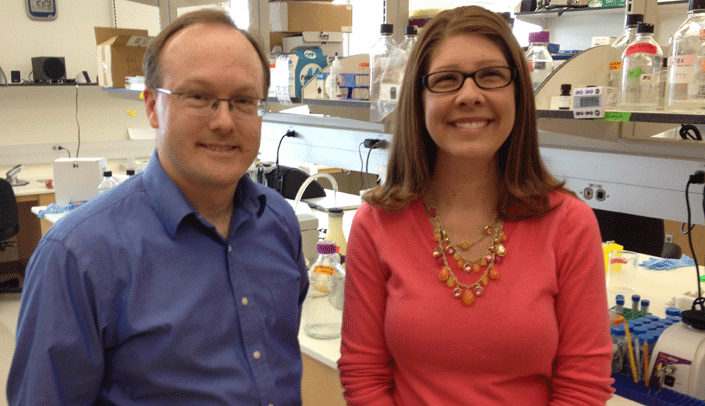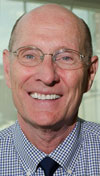Aging can be an unpleasant process.
Not only can it be a disappointment to look in the mirror each day, but it also can be downright painful as our joints begin to deteriorate.
|
TIME OUT |
WITH T.O. by Tom O’Connor |
More than 700,000 knee replacements and 330,000 hip replacements are performed each year in the United States. With an aging population and obesity on the rise, demand for total knee and hip replacement surgery is expected to exceed 4 million by 2030.
So, can anything be done to reverse this trend?
A UNMC developmental biologist, Andrew Dudley, Ph.D., and a University of Nebraska-Lincoln engineer, Angela Pannier, Ph.D., are taking a stab at it.
The unlikely duo is seeking a mechanism for repairing and regenerating cartilage, the tissue between joints that prevents the bones from rubbing against each other.
The theory is simple. If you can repair or regenerate the cartilage, it would go a long way toward reducing the need to have total joint replacement surgery.
Of course, some things are easier said than done. You can put cartilage regeneration in that category.
“Cartilage is unique,” Dr. Pannier said. “It doesn’t repair itself like most other tissues in the body. It’s similar to highway construction. You look for cracks and try to patch them, but once deterioration begins, it’s never the same.”
Dozens of labs around the country are currently working on cartilage regeneration.
Most focus on the more straightforward approach of generating mature adult cartilage, Dr. Dudley said.
However, early attempts have found that the new cartilage is not near as strong as original cartilage.
“Cartilage cells reside in a protein/sugar scaffold that changes over time and with use,” Dr. Dudley said. “In some ways, each of us contains customized cartilage.”
By combining their engineering and biologic skills, Drs. Dudley and Pannier hope to mimic the cell and scaffold structure of young cartilage and allow this cartilage to mature within the patient.
It’s a more challenging way of generating new cartilage — and could take many years to perfect this approach — but the two are convinced that it is the best method of attacking the problem.
“We speak two very different languages,” Dr. Dudley said. “Engineers want to produce something. Biologists want to learn something. But together we can accomplish something important.”
Together, let’s hope they can succeed. It sure would make the aging process less painful.

